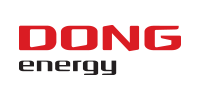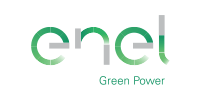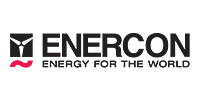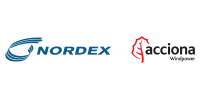Delegates are invited to meet and discuss with the poster presenters during the poster presentation sessions between 10:30-11:30 on Thursday, 29 September 2016.
Presenter

Co-authors:
Peter Furtner (1) F
(1) VCE Vienna Consulting Engineers ZT GmbH, Vienna, Austria
Presenter's biography
Biographies are supplied directly by presenters at WindEurope Summit 2016 and are published here uneditedDI Peter Furtner, male, 18 years’ experience, authorized representative at VCE, is responsible for the business fields “Structural Health Monitoring”, “Infrastructure Asset Management” and the related research activities at VCE. He is member of IABSE, IALCCE, ISHMII and IABMAS. The focus of his research work is on Life Cycle Assessment and management of the built infrastructure. He has coordinated 16 national funded research projects in Austria. He has been involved in several condition monitoring projects of offshore windfarms and other offshore strcutures.
Abstract
SHManager - a Web-User-Interface for data management, analysis, interpretation and presentation of Condition Monitoring Systems
Introduction
Offshore structures are exposed to a variety of environmental influences and loads like wind, waves, temperature and operation loads which induce corrosion and material fatigue. Owners have to know exactly the condition of the structure any time. Therefore over the last 15 years several condition monitoring systems (CMS) for offshore foundations and platforms have been installed. CMS in remote areas have to work with limited connection to telecommunication networks. Site visits to pick up measured data are costly and impose a time delay from measuring until notification of the owner. This fact emphasizes the need of autonomous remote monitoring and assessment.
Approach
CMS continuously produce measurement data on large scale. Apart from data recording, storage and management, data analysis and visualization play a decisive role for the utilization of these data.
For this purpose VCE developed the SHManager “user-interface“ applied for more than 50 CMS to now. This interface offers tools for fully automatic data analysis, life-time prediction as well as for reporting.
Main body of abstract
The SHManager user interface offers the following functions:
(1) Password secured access for any number of users.
(2) The access rights to individual projects and measurement data are individually assigned. The same applies to the functionality of the system (logbook function, acknowledgement of alarms, preparation of reports, download of data).
(3) After login there is a general view of the monitoring project (“monitoring dashboard“). It contains information on the project and the CMS. This includes a project description, the presentation in a map, photos and a link to the measurement system description and the individual components / data sheet. It also allows rapid access to selected measurement data and evaluation results.
(4) The User Interface allows the representation of time history charts for any number of measurement channels. Free time domain selection for display is available.
(5) Different types of charts can be selected: line and bar charts, scatter plots, special types for meteorological measurements.
(6) There are alarm functions via e-mail or SMS, e.g. in case of exceedance or shortfall of static or dynamic threshold values, missing data input or malfunctions like interruption of power supply.
(7) Logbook function: The user has the possibility to journalize events relating to the structure as logbook entry to oppose the monitored data to impacts e.g. from site activities, extraordinary events etc.
(8) Real-time display of selected measurement channels allows the presentation of continuous data flows of dynamic, high-frequency acceleration signals or other rapidly changing parameters.
(9) Data export of all data from the time history charts in common comma-separated ASCII-format.
(10) Import of external data via different interfaces (e.g. operation data).
(11) The establishment of a “monitoring cockpit“ is possible specifically for each project. This cockpit shows the current measurement data for all sensors at the structure.
(12) Automatic implementation of mathematical operations and analyses: calculation of measurement channels, correlation analyses, trend analyses, threshold criteria, classification, cycle counting, rainflow counting, fatigue analysis, life-cycle prognosis, etc.
(13) Automatically generated periodic measurement reports are possible. Project-specific templates are prepared and imported into the system. The reports can be downloaded or automatically sent by e-mail.
Conclusion
The benefits of modern CMS for maintenance of structures are almost unlimited. Advanced systems offer immediate transmission of data from the structure to be viewed online from anywhere in the world, at any time, automatic data analysis and automatic generated reports of assessment and automatic notification of the owner of the occurrence of predefined critical events.
Learning objectives
The key factor for the success of CMS for offshore structures is to offer integrated monitoring solutions with easy to handle user interfaces which are able to deal with huge amounts of data in an autonomous way. This includes a need for a clear and easy to understand presentation of the data, reliable services during the whole life-time of the CMS and easy access to data and analysis results including life time assessment and alert functions anytime anywhere. This solution will be presented to the audience.





Follow EWEA on: